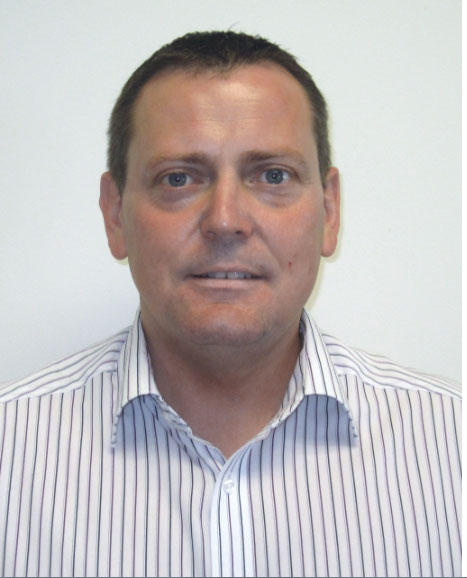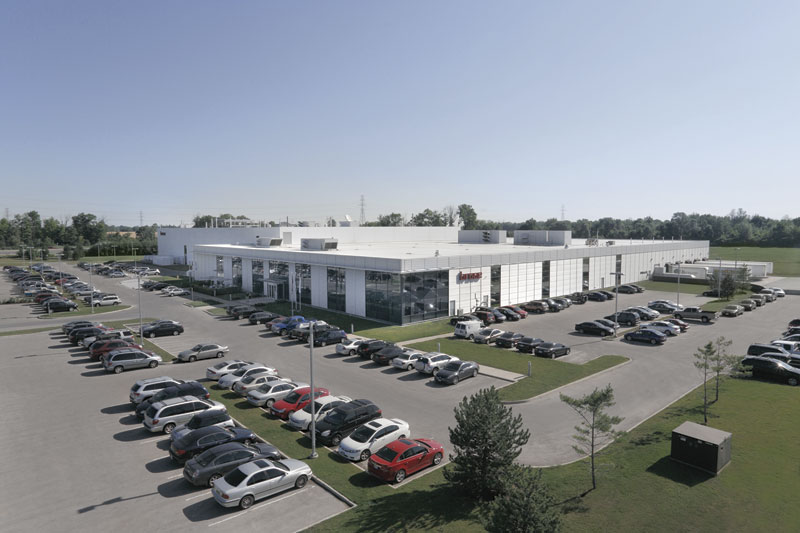by Tim Wilson
City supports company’s $170 M investments
Brose is a family-owned automotive supply company that’s been in business since 1908. Headquartered in Coburg, Germany, the company, which specializes in mechatronic systems for vehicle doors and seats as well as electric motors, has a global footprint. This includes a presence in London, ON, where Brose manufactures components, sub-assemblies, full seat adjusters, and back frame structures.
“The main plant is over 16,000 sq m, with the main administration and over 400 people,” says Steve Wilkins, Brose’s general plant manager in London. “The second leased facility is 15,000 sq m with 350 employees.”
Brose’s London plant supports the northern part of North America, both externally to Tier One assembly and sequence customers, and also internally as a Tier Two supplier to sister plants for adjuster assemblies.
“We send an average of 65,000 seat and backrest adjusters weekly,” says Wilkins. “And we also supply around 24,000 backrests to Chrysler and Mercedes.”
As well as Chrysler and Mercedes, other Brose end customers include Ford, BMW, VW, Subaru, and Nissan. The company is also making arrangements to supply its adjusters to Faurecia, Johnson Controls, Shiroki, and Magna.
 “The plant has three 800 ton presses,” says Wilkins. “Two are hydraulic and one is a servo hydraulic. These are dedicated to the stamping of seat rails, with all other metal components purchased locally. In total we have over 70 tool sets to cover all the variants of seat rails.”
“The plant has three 800 ton presses,” says Wilkins. “Two are hydraulic and one is a servo hydraulic. These are dedicated to the stamping of seat rails, with all other metal components purchased locally. In total we have over 70 tool sets to cover all the variants of seat rails.”
Metal remains the basic material for many Brose systems. Production processes use steel and aluminum coils, with prefabricated parts utilized for die-casting, stamping, welding and cold forming processes. To maintain the tools in Brose’s London operation, there are seven dedicated tool and die makers. These employees cover all shifts to support the plant while it is running in full production mode.
“Small repairs are made in-house, with die section repaired locally,” says Wilkins. “Larger, more complex tools and spare parts are made at Brose in Coburg, Germany.”
The London operation is part of a coordinated global presence. Brose has more than 80 car manufacturers as customers, with 58 facilities in 23 countries, and about 23,000 employees. In 2014 the company increased sales by 10 per cent, to 5.1 billion euros, keeping it in a strong position to invest in expansion, including in London.
“In total, over the past ten years, $170 million has been invested in the press shop, paint line, building, laser welding, and complex motor gearbox assembly,” says Wilkins. “Our focus is on high quality, low weight, cost effective sub-assemblies and assemblies that add a perceived value to the end customer.”
 It is no coincidence that Brose has chosen to situate its plant in London. The city has done its best to make conditions favourable for long-term investment in the area. This engagement goes back over a decade–and continues to this day.
It is no coincidence that Brose has chosen to situate its plant in London. The city has done its best to make conditions favourable for long-term investment in the area. This engagement goes back over a decade–and continues to this day.
“We have worked very closely with the London Economic Development Corporation (LEDC) since our arrival in London,” says Wilkins. “They were one of the reasons why we established our London location in 2005.”
In fact, it was the LEDC that helped Brose select a site and recruit permanent staff in administration and production. The LEDC also helped Brose when the company relocated its component manufacturing operations from Germany to Canada.
“Local government has supported our latest investment of $10 million with a grant of $1.1 million from the South Western Ontario Development Fund to support new business growth,” he adds. “This will, of course, help us develop the location further and safeguard jobs.”
And these are valuable jobs. Brose relies on the technical expertise of its workers, and on the engagement of its team members to support a continuous improvement philosophy. That means it has to be able to source quality workers from nearby.
“We are fortunate in London to be surrounded by the University of Western Ontario and Fanshawe College,” says Wilkins. “This provides a good technical workforce, which is necessary for our processes and equipment.”
Given expectations that North America will remain a growth market, it’s anticipated that the London plant will remain critical to Brose’s overall North American strategy. If so, we can expect to see Brose continue to lead the way in seat design, with more demand for components utilizing high strength, ultra light steels.
Brose’s Road To Success
It is estimated there is a Brose product in one of every three new vehicles produced worldwide. Aside from components for windows and seats, the company also makes motors for electronic braking systems, drive train actuators, and blowers and cooling fan modules.
Brose has been in business since the dawn of the automotive era, and made a name for itself in the early years of the industry by developing crank drives for lowerable windows. Then in 1963 Brose led the way again when it began to sell its power window regulator on the European market, with BMW as its first customer.
At around this time, Brose broke new ground by developing seat adjuster technology. Over fifty years later, seat technology is an area where Brose still excels, with the plant in London a critical part of company’s North American supply chain.
“What makes our manufacturing processes in London unique is our internal value stream,” says Brose’s general plant manager in London, Steve Wilkins, “as well as the speed to transfer a stamped rail into a seat adjuster assembly.”
Speed to market is critical in the fast-paced industry, with the London operation offering critical access to the US, an important growth area for the company. Jürgen Otto, CEO of the Brose Group, expects that his company “will again grow further in 2015,” with expectations “to expand our business by 10 per cent.”
That growth is based on innovation and an understanding of dominant industry trends. Dr. Christina Hack, the head of Brose’s advanced development department, has identified reducing weight and increasing vehicle efficiency as “mega trends in the automotive industry and the target of our development activities.” The challenge is then to square that with customer demand for enhanced safety and comfort, and to integrate the part production with a reliable, global supply chain–which is where the operation in London, ON, is an excellent fit.
Tim Wilson is a contributing editor. [email protected]
